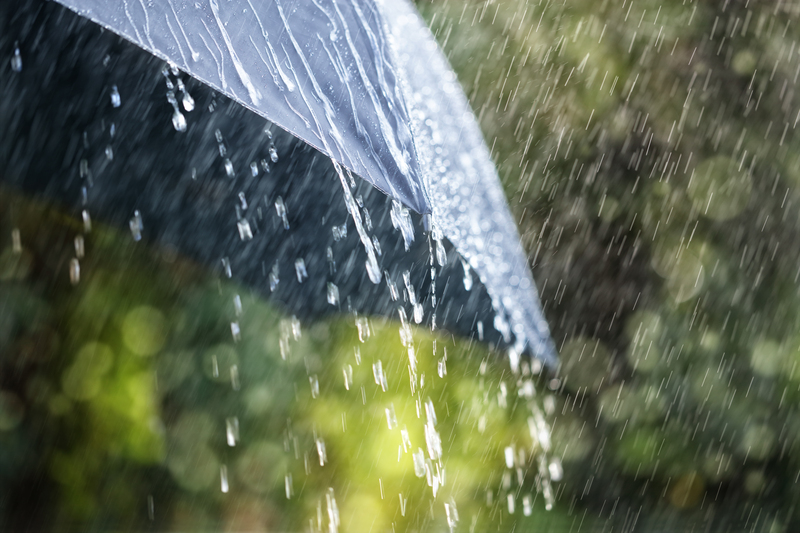Safeguard Your Freezer's Condition with Proper Storage Methods
Posted on 26/05/2025
Safeguard Your Freezer's Condition with Proper Storage Methods
Whether you're a home cook stocking up on bulk groceries or a business owner managing large-scale food storage, ensuring your freezer's optimal performance is essential. Not only does a well-maintained freezer protect your food investments, but it also guarantees that your appliances last longer, saving you money and time. In this comprehensive guide, we delve into the best practices for freezer storage to safeguard your unit's condition and keep your food fresh, safe, and delicious.

Understanding the Importance of Proper Freezer Storage
Proper freezer storage entails more than just tossing food inside and calling it a day. Improper storage techniques can lead to numerous issues, including unpleasant odors, freezer burn, wasted food, inefficient energy usage, and even damage to your freezer itself. By mastering correct storage methods, you ensure:
- Prolonged lifespan of your freezer
- Maintained food quality and nutritional value
- Efficient energy consumption
- Prevention of cross-contamination and spoilage
- Optimized storage capacity
Let's explore expert-backed methods to protect your freezer's health and keep your food in peak condition.
Optimal Freezer Organization: The Key to Longevity
1. Label Everything Clearly
Always label your food packages with the contents and the date of freezing. This small step pays off greatly by helping you practice First In, First Out (FIFO) inventory management, which reduces waste and keeps track of the freshness of your food. Use waterproof markers and freezer tapes for the best results.
2. Use Appropriate Packaging Materials
The type of packaging you use plays a crucial role in freezer maintenance. Rely on materials that are specifically designed for freezer use:
- Heavy-duty freezer bags - Prevent freezer burn and allow for easy storage and stacking.
- Rigid plastic or glass containers - Ideal for soups, stews, and sauces.
- Aluminum foil and plastic wrap - For layering and extra protection against moisture loss.
Tip: Remove as much air as possible to minimize exposure to oxygen, which causes freezer burn.
3. Avoid Overloading Your Freezer
While it's tempting to fill every inch of your freezer, overstuffing impedes air circulation. This can force your compressor to work harder, shortening the freezer's life and raising your energy bill. Aim to keep your freezer about 75-85% full for optimal performance.
4. Organize by Categories
Group similar items together (e.g., meats, vegetables, prepared meals) so you don't have to keep the freezer open searching for items. This not only saves energy but also keeps your freezer organized and easy to clean.
5. Keep a Map or Inventory List
Attach a running inventory list or a "freezer map" to the door. This helps you know exactly what you have and reduces the need for extended searches that make your freezer less efficient.
Methods to Prevent Freezer Burn and Food Spoilage
Understanding Freezer Burn
Freezer burn occurs when food is exposed to air, causing dehydration and oxidation. This leads to dry, tough, and sometimes tasteless food.
- Wrap food tightly using freezer-safe materials
- Double-bag particularly sensitive items
- Use vacuum sealing for the ultimate protection
Note: Freezer burnt food is safe to eat but may have diminished quality and texture.
Storing Different Types of Foods
Different foods require specialized storage methods to maintain quality and safeguard your freezer's condition:
- Meat & Poultry: Portion meats into meal-size servings. Place wax paper between slices to prevent sticking and ensure thorough freezing.
- Vegetables: Blanch before freezing to lock in flavor and nutrition. Pat dry before packaging.
- Baked goods: Cool before freezing and wrap in moisture-proof layers.
- Liquids: Leave space in containers for expansion to avoid cracking or bursting.
Rotation and Dating
Consistently practice the FIFO rule: first in, first out. Regularly check and rotate items so older foods get used up before newer ones. Marking all items with dates ensures nothing is forgotten.
Temperature Control: A Critical Factor in Freezer Maintenance
Setting the Right Temperature
Your freezer should always be set to 0?F (-18?C) or lower. At this temperature, bacteria growth is halted, and your food remains safe for extended periods. Check your freezer's temperature periodically with an appliance thermometer to verify accuracy.
Avoid Frequent Temperature Fluctuations
Frequent or dramatic changes in temperature compromise food safety and put stress on the freezer's compressor. Minimize the number of times you open the door and avoid leaving it open for extended periods.
Defrosting Your Freezer
If your freezer is not frost-free, regularly defrost it to maintain efficiency. Excessive ice build-up hinders air flow, increases energy use, and creates uneven temperatures.
- Manual Defrost: Wait until ice thickness reaches 1/4 inch before defrosting.
- Automatic Defrost: Clean and check the system per manufacturer's instructions.
Food Safety and Hygiene in Freezer Storage
Cleanliness is Key
Regular cleaning is crucial to safeguarding both your freezer's condition and the quality of your stored food. Remove expired or spilled items promptly and clean spills with mild detergent to prevent unpleasant odors and bacterial growth.
- Wipe down shelves and bins monthly
- Remove and wash all removable parts
- Baking soda can help neutralize persistent odors
Preventing Cross-Contamination
Store raw meats at the bottom of the freezer, below ready-to-eat foods, to prevent cross-contamination in case of leaking. Use separate bags and containers for different types of products.
Proper Thawing Techniques
Never thaw food at room temperature. For maximum food safety, thaw in the refrigerator, under cold running water, or, if cooking immediately, in the microwave. Rapid or unsafe thawing can encourage the growth of harmful bacteria.
Energy Efficiency and Freezer Care
Maintain Door Seals
Damaged or worn-out door seals allow air exchange, leading to temperature fluctuations and higher energy bills. Test your seal's integrity by closing a piece of paper in the door; if it slips out easily, replace your gasket. This small check can dramatically extend your freezer's lifespan.
Allow Proper Air Circulation
Keep the freezer's vents and condenser coils unobstructed to ensure efficient operation. Periodically clean the coils on the back or bottom of your unit to prevent dust build-up and overheating.
Strategic Freezer Placement
Place your freezer away from heat sources and in a cool, dry area. Avoid direct sunlight, ovens, and heating vents. This reduces the workload on the compressor and sustains performance.
Common Mistakes That Harm Your Freezer
- Storing hot food: Always cool food before freezing to avoid ice formation and unnecessary burden on the compressor.
- Using inappropriate containers: Thin plastic or non-airtight wraps invite freezer burn and odor transfer.
- Neglecting regular defrosting and cleaning: Ice build-up and spills can degrade freezer performance and hygiene.
- Blocking vents with food items: This impedes air flow and causes uneven freezing.
- Forgetting to maintain the seal or door gasket: Ineffective sealing leads to frost and high energy bills.
Long-Term Storage Tips for Optimal Freezer Condition
Keep a Temperature Log
Commercial kitchen managers and meticulous home users alike should keep a log of temperature checks to spot downward trends before food safety or freezer condition is compromised.
Embrace Vacuum Sealing
Investing in a vacuum sealer is one of the best ways to protect your freezer and your food. Removing air not only prevents freezer burn but also maximizes storage efficiency.
Inventory Rotation Schedules
Set phone reminders or label monthly clean-outs so nothing stays in the freezer past its prime. This supports regular cleaning and prevents overstocking.
Why Proper Storage Methods Safeguard Your Freezer's Condition
Proper freezer storage protects the unit in several ways:
- Reduces strain on mechanical components
- Maintains consistent freezing temperatures
- Prevents clogging of vents and sensors
- Limits ice and frost accumulation
- Keeps gaskets and seals in their best condition
In summary, a well-organized and efficiently packed freezer lasts longer, performs better, and saves you money.

Frequently Asked Questions About Freezer Storage Methods
How often should I clean my freezer?
Aim to deep clean your freezer every 3-6 months, with quick spot-cleans monthly. Remove expired products and wipe down surfaces to stop odors and bacteria.
What foods shouldn't be frozen?
Avoid freezing foods with high water content, like lettuce, cucumbers, and watermelon, as they become mushy. Fried foods also lose their crispiness. Always research a particular product's suitability for freezing.
Can I freeze food in its original packaging?
Store-bought packaging is often not freezer safe for long-term storage. Transfer to freezer-quality containers or bags to protect the food and your appliance.
Final Thoughts: Protecting Your Freezer With Smart Storage
Safeguarding your freezer's condition with proper storage methods is essential for any household or business. By being proactive--labeling, organizing, cleaning, and monitoring your freezer--you get the most out of your food and your appliance investment. Take these tips to heart, incorporate them into your routine, and you'll experience fewer breakdowns, lower energy bills, and always have high-quality food ready to enjoy.
For more freezer care tips, appliance advice, and food storage guidance, explore our other resources. Remember: protect your freezer, protect your food, protect your budget--all with the right storage techniques!





